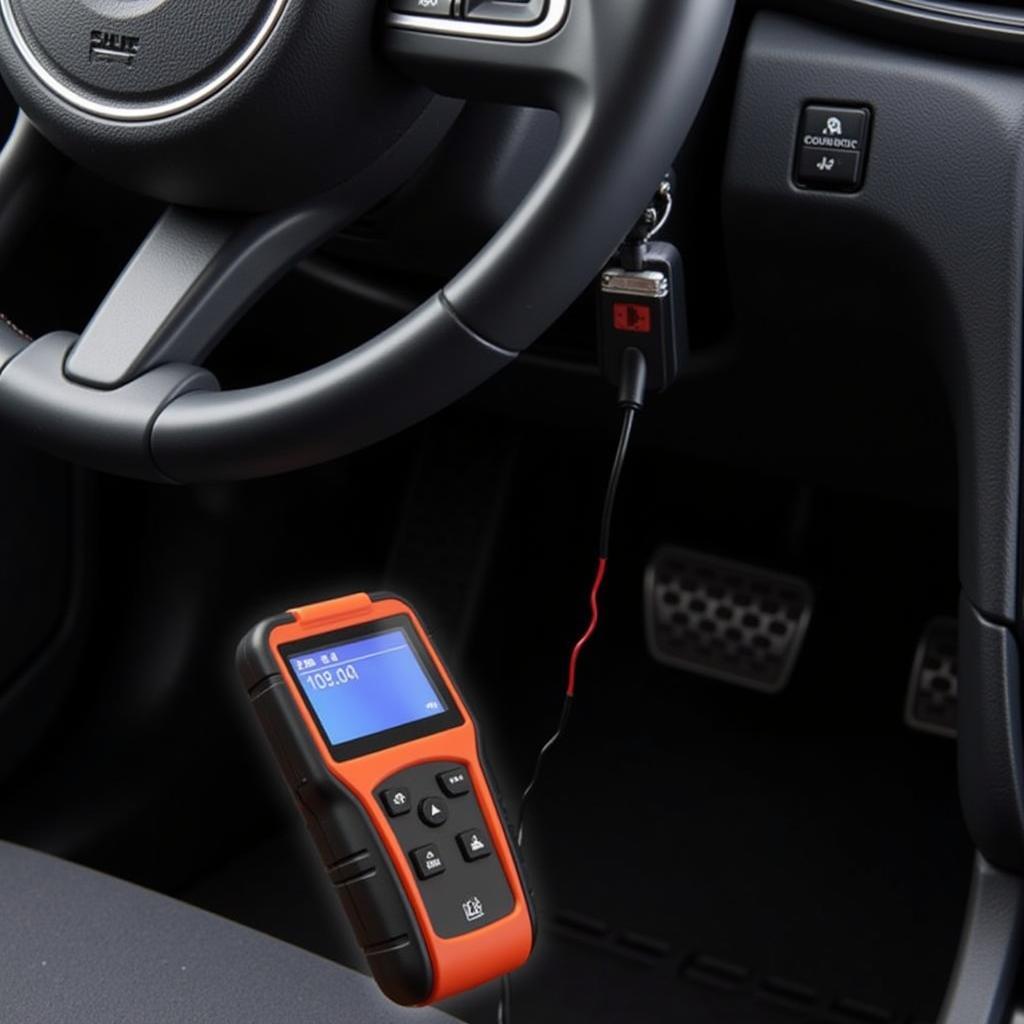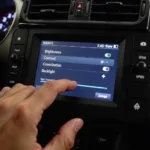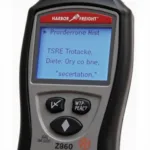OBD2 trouble codes can be frustrating for any car owner. Whether you’re facing a flashing check engine light or experiencing performance issues, understanding these codes is crucial for effective troubleshooting. This comprehensive guide will delve into the world of OBD2 trouble codes, explaining what they are, how to read them, and common issues they might indicate.
What are OBD2 Trouble Codes?
OBD2, which stands for On-Board Diagnostics, is a standardized system used in vehicles manufactured after 1996. When your car’s computer detects a problem within the engine, transmission, emissions system, or other critical components, it generates an OBD2 trouble code. This code, represented by a five-digit alphanumeric sequence, is stored in the vehicle’s computer memory.
How to Read OBD2 Trouble Codes
Each OBD2 trouble code follows a specific format:
-
First Character: This letter indicates the system where the issue lies:
- P: Powertrain (engine, transmission, etc.)
- B: Body (airbags, power windows, etc.)
- C: Chassis (ABS, traction control, etc.)
- U: Network & Communication (modules, wiring, etc.)
-
Second Character:
- 0: Standardized code defined by the Society of Automotive Engineers (SAE)
- 1: Manufacturer-specific code
-
Third Character: This number pinpoints the specific system or subsystem affected. For instance, “1” might represent the fuel and air metering system.
-
Fourth and Fifth Characters: These two digits represent the specific fault within the identified system.
For example, the code P0301 translates to “Powertrain, SAE Defined, Cylinder 1 Misfire Detected.”
Common OBD2 Trouble Codes and Their Meanings
While numerous OBD2 codes exist, some appear more frequently than others. Let’s explore a few common ones:
-
P0420: Catalyst System Efficiency Below Threshold (Bank 1): This code often indicates a failing catalytic converter, a crucial component of your car’s emissions system.
-
P0171: System Too Lean (Bank 1): This code suggests that the engine is receiving too much air compared to fuel. This could be due to a vacuum leak, a faulty oxygen sensor, or a malfunctioning fuel injector.
-
P0300: Random/Multiple Cylinder Misfire Detected: As the name suggests, this code signals that one or more cylinders in your engine are not firing properly. Possible culprits include worn spark plugs, faulty ignition coils, or a vacuum leak.
-
P0135: O2 Sensor Heater Circuit Malfunction (Bank 1, Sensor 1): This code points to a problem with the heating element in your oxygen sensor. A faulty sensor can disrupt the air-fuel mixture, impacting engine performance and fuel economy.
Troubleshooting OBD2 Trouble Codes
While understanding OBD2 codes is essential, self-diagnosing and repairing car problems can be complex and potentially dangerous. If you encounter an OBD2 trouble code:
-
Don’t Panic: A trouble code doesn’t always signify a catastrophic engine failure. Sometimes, simple fixes like tightening a loose gas cap or replacing a worn spark plug can resolve the issue.
-
Record the Code: Before clearing any codes, carefully note the exact code displayed. This information will be valuable when researching the issue or consulting with a mechanic.
-
Research the Code: Utilize online resources like OBDFree to gain a deeper understanding of the specific code and its potential causes. Our website provides comprehensive information and expert advice on various OBD2 trouble codes.
-
Consult a Qualified Mechanic: If you’re uncomfortable tackling car repairs yourself, seek assistance from a trusted mechanic. They have the expertise, tools, and experience to accurately diagnose and resolve the problem.
Conclusion
OBD2 trouble codes play a vital role in modern vehicle diagnostics, providing valuable insights into potential problems with your car. By understanding how to read and interpret these codes, you can take proactive steps towards resolving issues, ensuring your vehicle operates smoothly and safely. Remember, while online resources like OBDFree offer valuable information, consulting a qualified mechanic is crucial for accurate diagnosis and repair.


